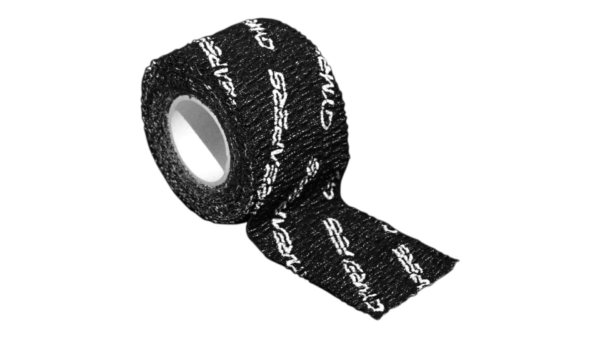The Unsung Hero of Olympic Lifting: Thumb Tape and Why You Need It
Olympic lifting – the snatch and the clean & jerk – is a ballet of power, precision, and grit. We obsess over technique, strength programs, and the perfect pair of lifting shoes. But there’s a humble, often overlooked tool that can drastically improve your lifting experience: thumb tape.
Yes, that roll of sticky athletic tape gathering dust in your gym bag. It might seem insignificant compared to your barbell or squat rack, but for anyone serious about Olympic lifting, especially utilizing the hook grip, thumb tape is nothing short of an unsung hero.
Let’s be honest, the hook grip is brutal. It’s essential for securing a solid grip on the barbell during those explosive movements, but it also subjects your thumbs to immense pressure and friction. Think about it: you’re wrapping your fingers around a knurled steel bar, pinning your thumb beneath your index and middle finger, and then forcefully pulling hundreds of pounds. Without protection, your thumbs are destined for pain, blisters, and ripped calluses.
This is where thumb tape steps in. It’s not just about looking cool with those little strips on your thumbs (though, let’s admit, it adds a certain je ne sais quoi to your lifting aesthetic). Thumb tape is a performance enhancer disguised as a simple comfort measure.
Why Should You Be Taping Up?
- Pain Management and Prevention: The most immediate benefit is pain reduction. Thumb tape acts as a buffer between your thumb and the barbell, distributing pressure and minimizing the searing pain that often accompanies heavy hook grip lifts. By reducing pain, you can focus more on your technique and power output, rather than gritting your teeth through each rep.
- Blister and Skin Tear Prevention: Friction is the enemy of healthy thumbs. The constant rubbing against the knurled bar, especially during high-volume training or PR attempts, can lead to painful blisters and skin tears. Thumb tape provides a smooth, protective layer, significantly reducing the risk of these debilitating injuries. Nobody wants to sideline their training because of a ripped callus!
- Improved Grip Security (Indirectly): While thumb tape doesn’t directly strengthen your grip, by reducing pain and preventing blisters, it allows you to maintain a more secure and consistent hook grip throughout your lifts. When you’re not distracted by thumb pain, you can focus on generating maximum power and maintaining proper bar path.
- Confidence Booster: Knowing your thumbs are protected can provide a significant mental edge. You can approach heavier weights and more challenging workouts with greater confidence, knowing that you’ve taken a proactive step to mitigate potential discomfort and injury.
When Should You Reach for the Tape?
- Heavy Lifting Days: Anytime you’re planning on tackling heavier weights, especially in the snatch and clean & jerk, thumb tape is your best friend. The increased pressure on your thumbs with heavier loads makes tape crucial.
- High Volume Training: If your workout involves multiple sets and reps with the hook grip, even at moderate weights, thumb tape can prevent cumulative friction and potential skin issues.
- New to Hook Grip: As your thumbs are adapting to the hook grip, tape provides essential protection and comfort during this often painful learning process.
- Pre-Existing Thumb Issues: If you’re prone to blisters, calluses, or have sensitive skin on your thumbs, tape should be a staple in your lifting routine.
- Competitions: On competition day, you want to be at your absolute best, both physically and mentally. Thumb tape ensures your thumbs are protected, allowing you to focus entirely on your performance.
The Art of Taping: Tips for Success
- Choose the Right Tape: Opt for thin, elastic athletic tape. Avoid thick, rigid tape as it can restrict thumb movement and feel bulky. Look for brands specifically designed for athletic use, as they often have better adhesive and durability.
- Clean and Dry Thumbs: Before applying tape, ensure your thumbs are clean and completely dry. This will help the tape adhere better and last longer.
- Less is Often More: You don’t need to wrap your entire thumb like a mummy. A small strip or two strategically placed over the areas that bear the most pressure (typically the pad of your thumb and the base of your thumbnail) is usually sufficient.
- Experiment with Shapes: Try different taping shapes like strips, “X” shapes, or even butterfly shapes to find what works best for your thumb shape and lifting style.
- Don’t Tape Too Tight: The tape should be snug but not constricting. You should still be able to move your thumb comfortably. Tape that’s too tight can impede circulation and be uncomfortable.
- Practice Makes Perfect: Like any skill in Olympic lifting, taping takes practice. Don’t be discouraged if your first attempts are a little messy. Keep experimenting and you’ll find a technique that becomes second nature.
Beyond Comfort: Investing in Your Performance
Thumb tape is more than just a bandage for sore thumbs. It’s a proactive tool that allows you to train harder, lift heavier, and push your limits in Olympic lifting. It’s a small investment that yields significant returns in terms of comfort, injury prevention, and ultimately, performance.
So, ditch the excuses, embrace the tape, and experience the difference it can make. Your thumbs (and your PRs) will thank you for it. Go tape up and lift on!
You must be logged in to post a review.


Reviews
There are no reviews yet.